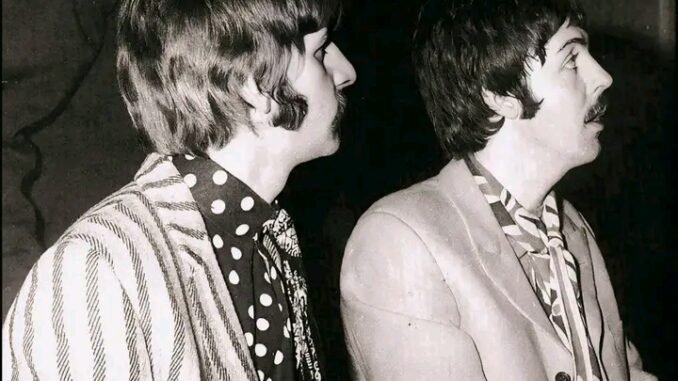
It was the early 1980s, a period marked by change and reflection. Paul McCartney, having already achieved monumental success with The Beatles and embarking on a solo career that spanned continents, found himself in a rare moment of solitude—and longing. Despite the glamour, the applause, and the endless tour schedules, a part of him yearned for something simpler: the feeling of home.
He had always been a son of Liverpool, a city that shaped his earliest memories, melodies, and dreams. Yet, after years of global fame, the city had become a distant shore, a place he visited only through photographs and stories. Now, he needed to reconnect—not as the legend, not as the icon, but as the boy who once ran through the same streets, played in the same parks, and listened to the hum of Liverpool life.
One chilly morning, Paul made a decision. He would slip away from the limelight, go back to his roots, and walk among the people who had once been his neighbors, classmates, and friends. Without any entourage, without any security detail, he checked into a modest hotel under a pseudonym—“Mr. Smith,” a common enough name that wouldn’t raise suspicion. It was a quiet, anonymous choice, driven purely by a desire for authenticity.
The Journey Begins
That afternoon, clad in a battered cap, a trench coat, and sunglasses, he set out. His footsteps echoed softly along the cobblestone streets. The city was alive with the usual murmur of buses, children playing, street musicians strumming familiar tunes. Paul felt himself breathe more deeply than he had in years.
He wandered down Penny Lane, the lane immortalized in song—a place where the past and present intertwined. The familiar sight of the barber’s shop, the park where the children played, the old lamp posts—they all felt like old friends welcoming him home.
Next, he visited the Liverpool Institute for Boys, the school where he and John Lennon had met and formed their legendary partnership. Standing outside, he paused, memories flooding back. The classrooms, the corridors—so unchanged, yet so filled with stories of youthful ambition and dreams.
A Walk Through Forthlin Road
Later, he strolled past his childhood home on Forthlin Road. The house was modest, the garden overgrown, but to Paul, it radiated history. He paused, touching the brick wall, feeling the pulse of his childhood. The sounds of distant laughter, the smell of fresh paint from a local shop—these were the textures of his earliest days.
Local residents noticed him. Some recognized the familiar gait, the outline of a man they’d seen on television, but instead of making a scene, they nodded politely, respectful of his privacy. A few smiled knowingly, perhaps recalling their own childhood memories or tales of the boy who once roamed these streets.
Anonymity and Reflection
For hours, Paul wandered, lost in thought, absorbing the city’s rhythm. He listened to street musicians, watched children play football, and sat quietly on a park bench, contemplating the life that had taken him far from these streets yet remained rooted deep within him.
He wasn’t seeking fame or recognition. This was a pilgrimage of the soul—a personal homage to the roots that had nurtured his talents and dreams.
The Return to Reality
As evening fell, Paul returned to the hotel, his heart full but his face unchanged. The city had given him what he needed: a moment of genuine connection, a reminder of where it all began.
The next day, back in the limelight, he would continue his musical journey, but the quiet visit remained a treasured secret—an intimate chapter in his life story.
Reflections from the Man Who Returned
Years later, Paul McCartney confirmed that the visit had been about more than nostalgia. It was about humility, about grounding oneself amidst the whirlwind of fame. “Sometimes,” he said, “you just need to be a person, not a legend. To see your city through your own eyes, not through the lens of history or fame.”
The Significance for Fans
For fans like me, this story resonates because it humanizes a figure often seen as larger than life. It reminds us that beneath the fame is a person who, despite the world’s adoration, still craves the simple, honest connection to where it all began.
It’s a testament to the power of humility, authenticity, and the enduring bond between an artist and his roots. Paul McCartney’s quiet return to Liverpool isn’t just a story about a visit; it’s a lesson in staying true to oneself, no matter how high one climbs.
In a world obsessed with spectacle, Paul’s decision to walk the streets unnoticed speaks volumes. It’s a reminder that sometimes, the most profound moments happen in silence—when we step back from the noise, breathe in the familiar air, and reconnect with the essence of who we are.
And as long as we have stories like Paul’s, we’re reminded that no matter how far we go, the roots are always there, waiting to welcome us home.
Leave a Reply